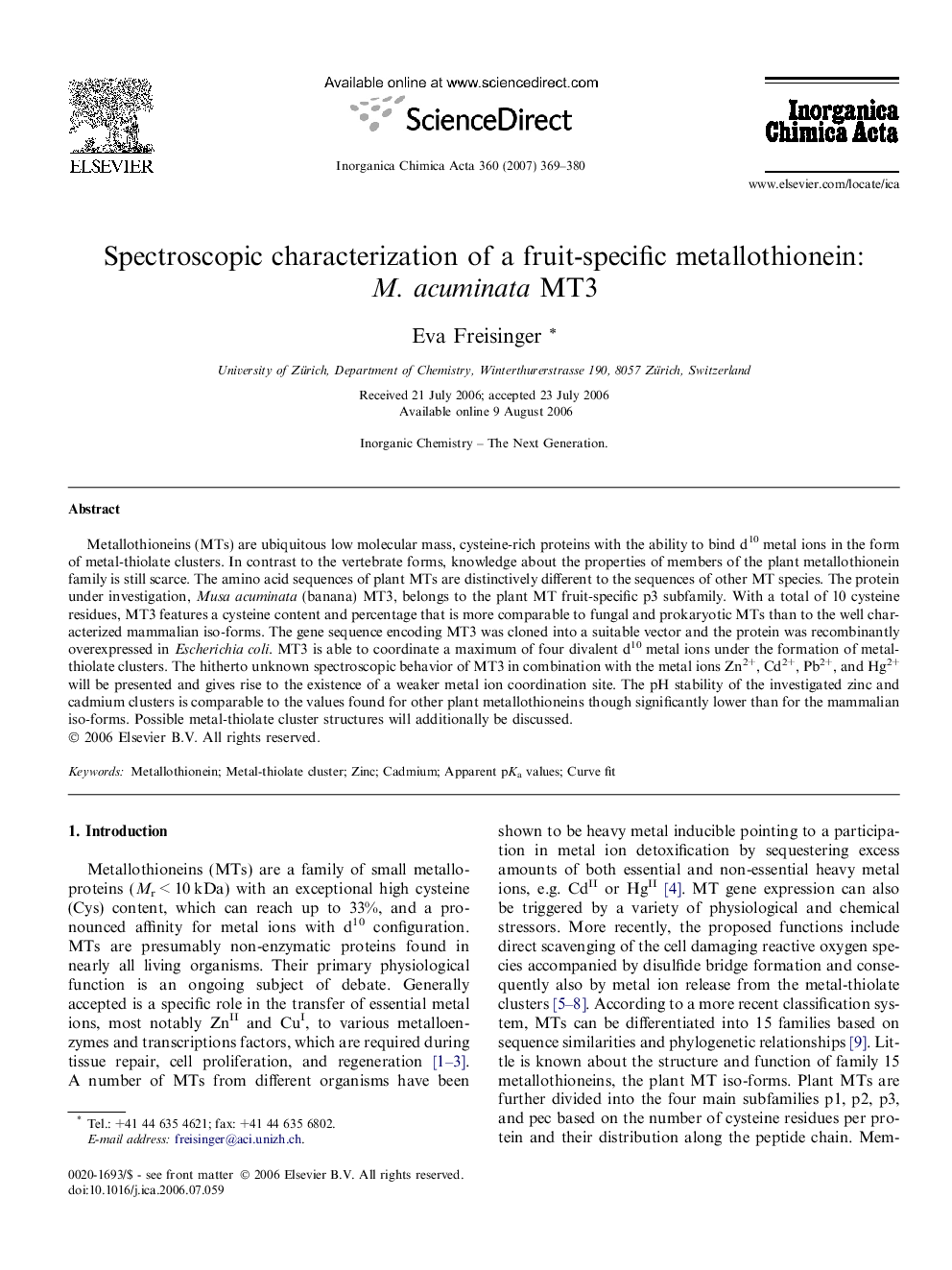| کد مقاله | کد نشریه | سال انتشار | مقاله انگلیسی | نسخه تمام متن |
|---|---|---|---|---|
| 1310859 | 975263 | 2007 | 12 صفحه PDF | دانلود رایگان |

Metallothioneins (MTs) are ubiquitous low molecular mass, cysteine-rich proteins with the ability to bind d10 metal ions in the form of metal-thiolate clusters. In contrast to the vertebrate forms, knowledge about the properties of members of the plant metallothionein family is still scarce. The amino acid sequences of plant MTs are distinctively different to the sequences of other MT species. The protein under investigation, Musa acuminata (banana) MT3, belongs to the plant MT fruit-specific p3 subfamily. With a total of 10 cysteine residues, MT3 features a cysteine content and percentage that is more comparable to fungal and prokaryotic MTs than to the well characterized mammalian iso-forms. The gene sequence encoding MT3 was cloned into a suitable vector and the protein was recombinantly overexpressed in Escherichia coli. MT3 is able to coordinate a maximum of four divalent d10 metal ions under the formation of metal-thiolate clusters. The hitherto unknown spectroscopic behavior of MT3 in combination with the metal ions Zn2+, Cd2+, Pb2+, and Hg2+ will be presented and gives rise to the existence of a weaker metal ion coordination site. The pH stability of the investigated zinc and cadmium clusters is comparable to the values found for other plant metallothioneins though significantly lower than for the mammalian iso-forms. Possible metal-thiolate cluster structures will additionally be discussed.
The previously uninvestigated translational product of the Musa acuminata mt3 gene was successfully expressed in Escherichia coli and purified. A subsequent spectroscopic investigation reveals the metal ion binding abilities of this protein. It was shown that MT3 is indeed a plant metallothionein with the ability to bind up to four divalent d10 metal ions in a metal-thiolate cluster arrangement.Figure optionsDownload as PowerPoint slide
Journal: Inorganica Chimica Acta - Volume 360, Issue 1, 1 January 2007, Pages 369–380